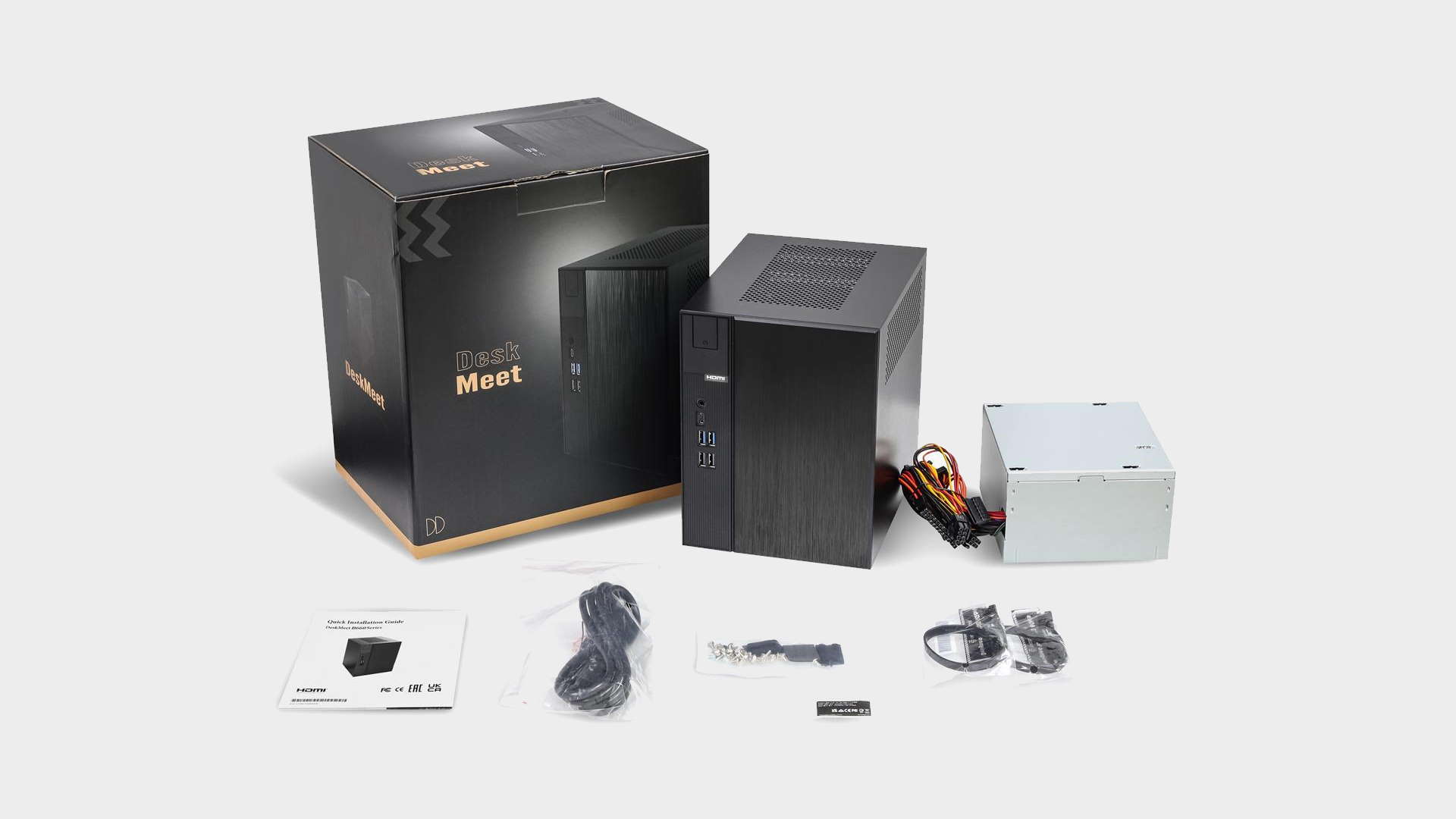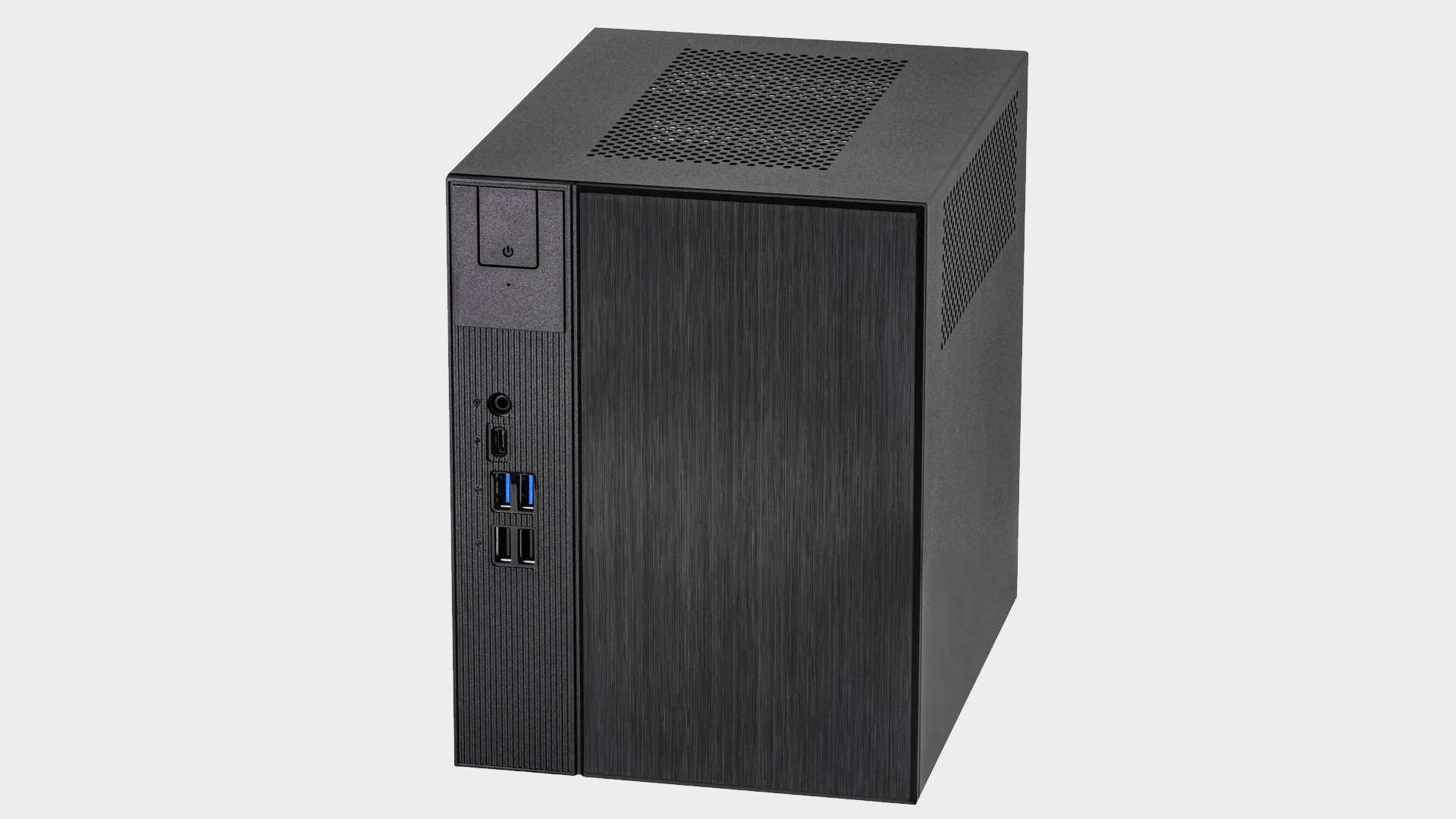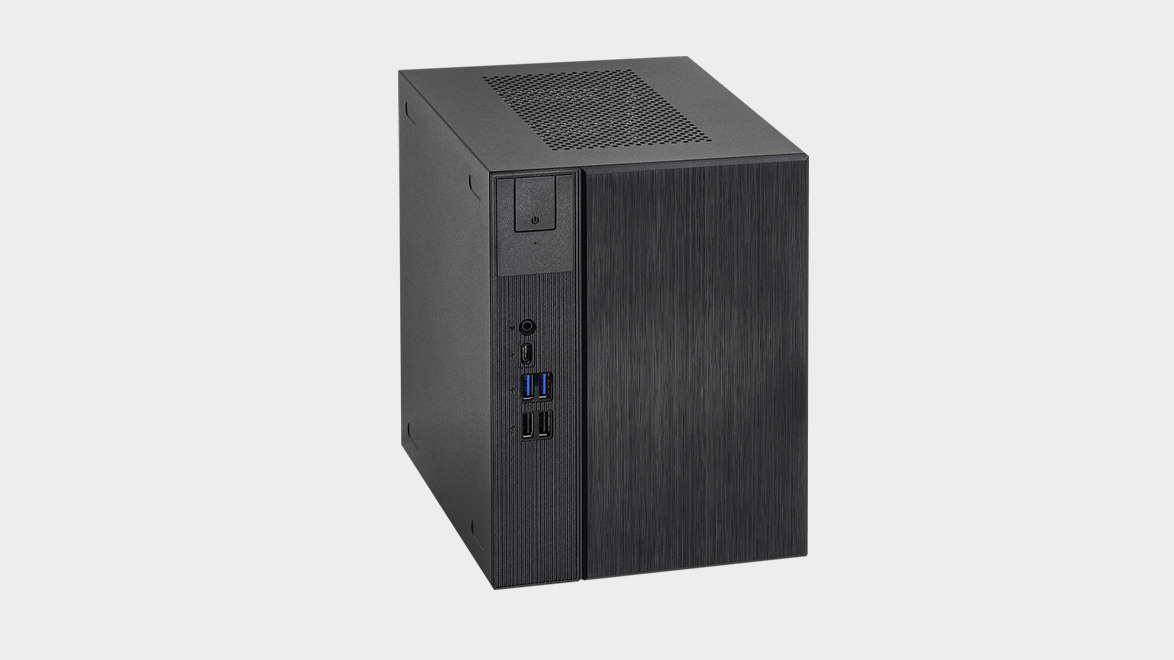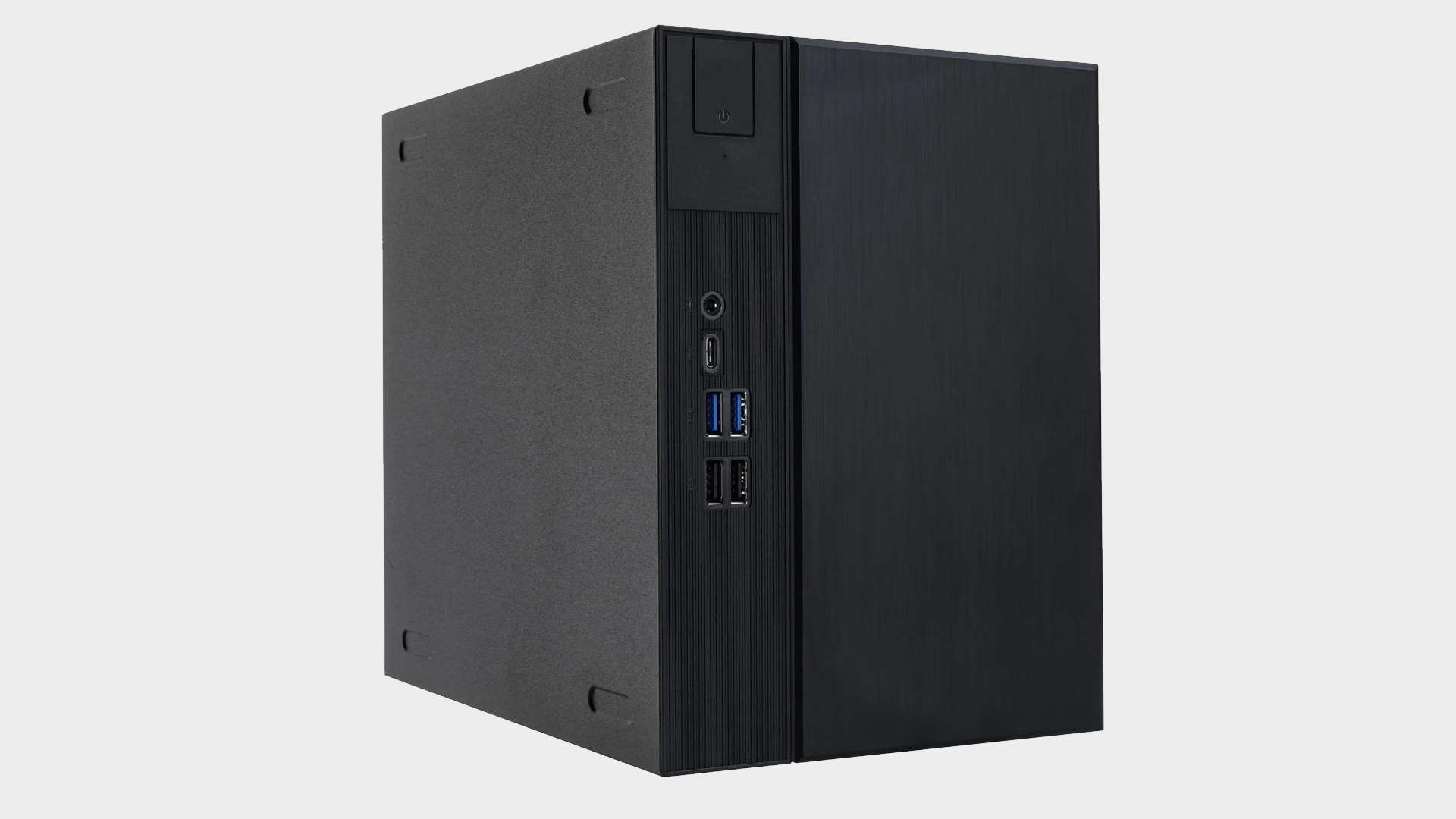Our Verdict
As always, if you want to fit a system inside a tiny form factor there are big compromises involved. Smart design mitigates some, but not all, in this workstation cube.
For
- Clever internal layout
- Plenty of front panel connections
- Pretty cute tbh
Against
- Tiny CPU cooler clearance
- Limits GPU choice
- Budget feel to case materials
PC Gamer's got your back
For a large part of 2019, your humble writer here commuted between the extreme north and southwest of England. Among the many logistical headaches that created—not least finding something to eat other than profoundly depressing buffet cart sandwiches and procuring earbuds that drowned out even the most determined quiet coach jabberer—was transporting a PC.
That put me among the ranks of the small form factor enthusiast, a collective of road warriors, office machine builders, and retro gamers who want dedicated emulator machines. Personally, I just needed something that I could fit an RTX 2080 Ti into, and which could then subsequently fit into a suitcase.
ASRock's latest 8L miniature delight can't quite manage that GPU feat, but despite the DeskMeet B660's rather more work machine-focused design it can hold a pretty muscular gaming spec inside it.
Its dimensions are properly miniscule: 168 (W) x 236.1 (D) x 221.6(H) mm. Certainly some compromises have to be made if you're going to put a proper gaming machine in there, but some serious thought has gone into the internal layout to ensure reasonably big GPUs will fit. And there's at least some airflow happening.

CPU support: Intel 12th Gen
Cooler clearance: 54mm
Memory support: Up to dual channel DDR4-3200
Motherboard chipset: Intel B660
Graphics support: Dual slot up to 200mm length
Storage: 3x SATA 6Gbps, 2x M.2 (Gen4 x4)
Front I/O: 1x 35mm audio jack, 1x USB 3.2 Type-C, 1x USB 3.2 Type-A, 2x USB 2.0 Type-A
Volume: 8L
Dimensions: 168 x 236.1 x 221.6 mm
Price: $224 | £242
Officially, the case supports discrete graphics cards up to 200mm long, though there is a little more room in there. So, if your intended GPU is a few mm longer than the stated length you can still just about wedge it in. I managed to slot in ASRock's own RX 6400 Challenger ITX model in there with no problems, but if you're looking for more performance and cooling power, beefier dual-fan cards like EVGA's XC2 3060 TI will fit too.
There's less wiggle room when it comes to CPU fans, with just 54mm clearance. You're basically limited to stock coolers on your Intel LGA1700 chip here, unless you opt for a different PSU than ASRock's supplied custom unit; but doing so brings its own complexities since this custom 500W power supply sucks air in and down towards the CPU fan.
That orientation feels so deliberate that it might well be crucial to keeping temps down, and thus opting for a different PSU to accommodate a slightly bigger CPU fan could end up negating the whole point of the endeavour.
Given that the PSU's bespoke though, we'd have appreciated a bit less excess wiring and a modular cable design, because there's really nowhere to tuck and cable-tie away your loose or unused wires.

Aesthetics aren't big on the agenda, granted, since this isn't a windowed case, but all the cable bulk does affect airflow, dust build-up, and ease of building.
My poor, poor fingers.
Storage options are suprisingly varied here, accomodating one big old 3.5-inch HDD, two 2.5-inch SSDs that can be mounted in place, or M.2 storage via the front and rear of the motherboard. Aside from the read/write advantage of the latter, it's also much easier to build a system inside this 8L block using a tiny M.2 stick. No additional cables, nothing to mount.
By contrast, mounting 2.5-inch SSDs and then trying to get the SATA and power connectors hooked up neatly takes much more fiddling.
Cable management did remain an issue though, even after stripping it down and starting it again with a different build.
It's certainly not the easiest barebones system to build inside then, but that does come with the territory at this size. Once I figured out the intended order in which, each component needed to be installed there was always just enough room to secure it in place. Cable management did remain an issue though, even after stripping it down and starting it again with a different build.
At least taking the outer case on and off is easy—just one screw affixes that black shell in place, then the frame slides out. The build quality's somewhere between a workstation PC and a mid-range gaming case, with some nice detailing here and there and brushed effect on the front paneling.
It's also handy to have so many connections on the front: two USB 2.0 ports, two USB 3.0s, a USB Type-C, and a 3.5mm audio socket. That's just as well considering the paucity or ports at the back of the machine; unless you actually consider the ancient D-Sub monitor connection truly vital, of course.
The power switch feels a bit loose, though, and the overall finish quality feels budget —which, essentially, is where the barebones bundle lies in its pricing. At $224 (£242) for the case, B660 motherboard, and PSU, there's a real value proposition here. And that means I'm inclined to forgive a wobbly button here and there.
Acoustic dampening is one of the many things jettisoned in order to bring the dimensions down, so you can expect a fair bit of fan noise. Especially if you're using it on the hottest day ever recorded here in the United Kingdom, as this foolhardy writer was. Fair enough, though: no crashes. Primarily because sitting indoors playing games next to an increasingly hot box of exhaust fans became less of a priority than going out and buying ice lollies.



Whether this is place to put precisely eight litres of your componentry really depends how much of a trade-off you're prepared to make in gaming performance for size. A mini-ITX barebones like NZXT's H1 has room for more powerful GPUs and a motherboard that can handle greater power draws to the CPU. Plus it looks wonderful, and you can wave hello to your parts through the window. But it's slightly bigger.
By contrast, ASRock's quasi-workstation B660 barebones is never going to house something that can run Cyberpunk 2077. Instead, it feels like the solution to a much more specific problem, whether that's a precise portability requirement, a stealthy workstation with extra gaming muscle, or an emulation platform.
As always, if you want to fit a system inside a tiny form factor there are big compromises involved. Smart design mitigates some, but not all, in this workstation cube.
Phil 'the face' Iwaniuk used to work in magazines. Now he wanders the earth, stopping passers-by to tell them about PC games he remembers from 1998 until their polite smiles turn cold. He also makes ads. Veteran hardware smasher and game botherer of PC Format, Official PlayStation Magazine, PCGamesN, Guardian, Eurogamer, IGN, VG247, and What Gramophone? He won an award once, but he doesn't like to go on about it.
You can get rid of 'the face' bit if you like.
No -Ed.



